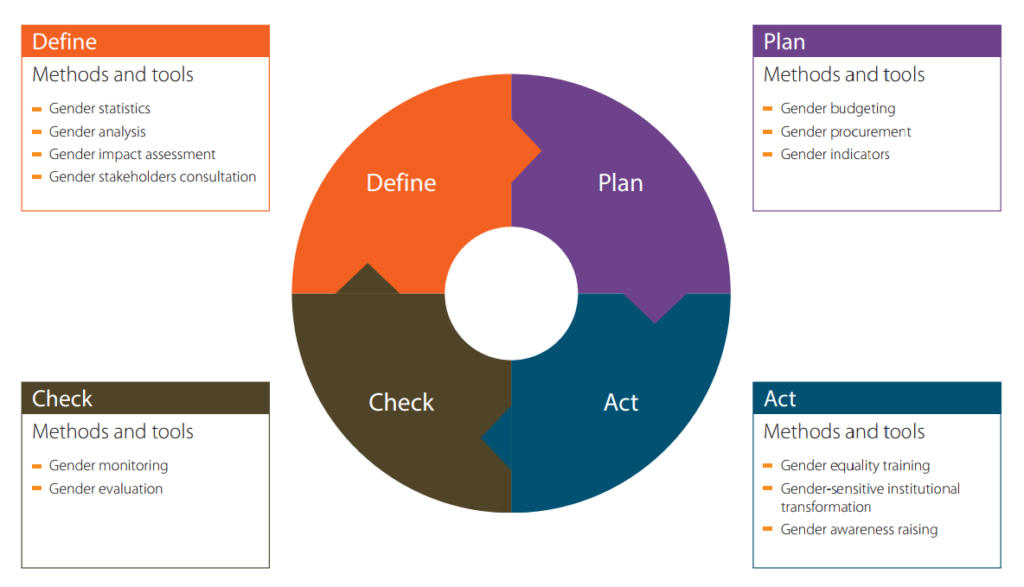
Gender mainstreaming has been embraced internationally as a strategy towards realising gender equality. It involves the integration of a gender perspective into the preparation, design, implementation, monitoring and evaluation of policies, regulatory measures and spending programmes, with a view to promoting equality between women and men, and combating discrimination.
Importance
Gender mainstreaming ensures that policy-making and legislative work is of higher quality and has a greater relevance for society, because it makes policies respond more effectively to the needs of all citizens – women and men, girls and boys.
Gender mainstreaming makes public interventions more effective and ensures that inequalities are not perpetuated.
Gender mainstreaming does not only aim to avoid the creation or reinforcement of inequalities, which can have adverse effects on both women and men. It also implies analysing the existing situation, with the purpose of identifying inequalities, and
developing policies which aim to redress these inequalities and undo the mechanisms that caused them.
Who is responsible for Gender Mainstreaming?
At national level, it is up to the governments of Countries. However, it is not only the responsibility of specific individuals working in certain areas or units. While specific structures should be established and persons responsible appointed, the responsibility for implementing gender mainstreaming should be with the entire staff of public institutions, under the leadership of the management.
How does it work?
A political commitment for gender equality and a compatible legal framework are the basic conditions for the development of a successful gender mainstreaming strategy. In addition to concrete objectives and targets in the strategy, gender mainstreaming requires a clear action plan. Such plan should take into account the context, satisfy the necessary conditions, cover all the relevant dimensions, foresee the use of concrete methods and tools, set out the responsibilities and make sure that the necessary competences exist to achieve the anticipated results within a planned time frame.
Dimensions of Gender Mainstreaming
Gender mainstreaming requires both integrating a gender perspective to the content of the different policies, and addressing the issue of representation of women and men in the given policy area. Both dimensions – gender representation and gender responsive content – need to be taken into consideration in all phases of the policy-making process.

Gender Mainstreaming Cycle
Integrating the gender perspective in a policy means that equality between women and men, as the overarching principle, should be taken into consideration in all decisions, in each phase of the policy-making process, by all the actors involved.
The policy process is understood as a multi-stage cycle, including defining, planning, implementing and checking (monitoring and evaluating). In many cases, these stages are turned into a cycle, with each step being repeated as changes occur. For
example, when a policy is evaluated, it may reveal new problems that need to be addressed for re-programming.

